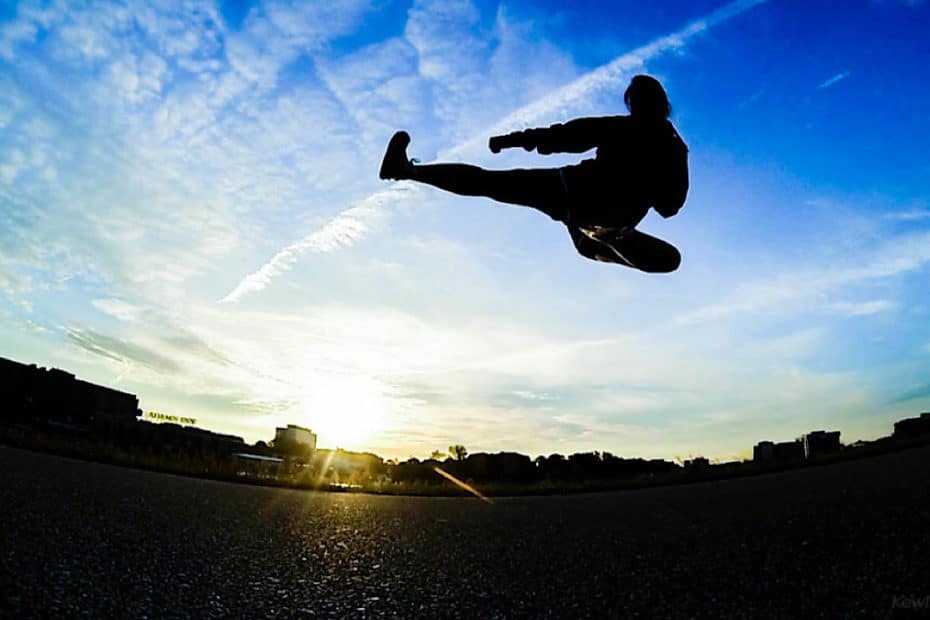NEW In The Shop: Don’t Let The Tame Ones Tell You How To Live [Poster]
Why We ♥ It: Some of the best advice I (Matt here) ever got was: don’t take life advice from people who aren’t living a life you want to live and don’t take criticism from people you wouldn’t go to for advice. I created this poster to act as a reminder to listen more closely to our role models and less closely to our critics, trolls, and tamed-comfort-zone-hugger acquaintances. It’s also a perfect gift for the outdoor adventurer, travel enthusiast, or solo explorer (or soon to be). Available in print or digital download. 👇🏼
...Want to advertise your book, product, or service? Send inquiries to matt@movemequotes.com.
What is the biggest distinguishing factor between a beginner and a master? Repetitions. The master has not only tried significantly more than the beginner, but has tried and failed more times than the beginner has even tried. Some people might start out ahead with born talent and natural ability, but nobody starts out ahead with repetitions. Nobody.
When it comes to progression it’s a fair game—you get out what you put in. And when it comes to leveling up from ‘sloppy‘ to ‘fair‘ to ‘good‘ to ‘excellent‘—the ones who are going to level up quicker are the ones who put in more time and effort. Let me give you a Martial Arts example.
Let’s say I had a student who was trying to learn how to do a quality Flying Side Kick. And all I did was demonstrate to them a Flying Side Kick and just told them to, ‘Go!’ (do it themself)—how would it turn out? It would probably look painfully sloppy. Why? Because a Flying Side Kick is a complex, full-body skill that requires high levels of coordination and strength.
What the student needs to do is level up to a certain “Rep Club” (or cross a certain repetition threshold) before the nerve-signals and muscles fibers being fired can work together in the smooth, coordinated fashion that is required for that complex movement. Furthermore, before the student can just jump to practicing the complex movement, it would need to be broken down to more simple, digestible parts. This allows for more focused and safe progression.
Breaking Down Complex Movements Into Simpler Components First
Here’s a breakdown of what the objectives might look like if I was to teach a student how to perform a proper flying side kick:
- Objective #1: The student must obtain a basic understanding of how to do a proper non-jumping Side Kick.
- Objective #2: The student must learn how to do a proper Back Leg Side Kick.
- Objective #3: The student must learn how to run, jump, and land properly.
- Objective #4: Then, the student may attempt to execute a proper Flying Side Kick using all of the above learned skills together.
With each of these objectives, a certain number of repetitions would need to be thrown before moving on to the next. If the student decides to advance to the next objective after only a few repetitions, then naturally the next (laddering) movement won’t be as good as it would be if they were to get a higher rep count in first. It’s also important to point out that this is only a ball park and that rep count certainly varies based on the student’s aptitudes, abilities, focus, and work ethic (more on that below). Here is a list of what the goals might be for each rep category:
- Reps 1 – 100: Sloppy. Still trying to figure out the gross motor skills for each of the objectives.
- Reps 101 – 1,000: Fair. Gross motor skills are getting better but the fine motor skills required for each objective still need work.
- Reps 1,001 – 10,000: Good. Gross motor skills are learned and practiced, fine motor skills are getting better but not quite there.
- Reps 10,001+: Excellent. Both gross and fine motor skills are learned and practiced and the continued focus is on jumping higher, kicking stronger, and increasing flexibility (which can always be improved!)
Progress Is All About Reps...
This idea transgresses the bounds of physical skills and applies to all skills and techniques in general. Want to be a good writer? Well, how often do you practice writing? Want to become an excellent public speaker? Well, how many times have you spoken publicly? Want to become a more compassionate and understanding person? Well, how often do you practice compassion and listening? Here’s what it comes down to:
- Are you in the 10 Rep Club? Have 10 hours logged in for public speaking? Have 10 essays written in your life? Your skills/ techniques are probably sloppy.
- Are you in the 100 Rep Club? Have 100 essays written in your life? Have you had 100 compassionate conversations? Your skills/ techniques are probably fair.
- Are you in the 1,000 Rep Club? Have 1,000 hours logged in for public speaking? Have 1,000 blog posts written? Your skills/ techniques are probably good.
- Are you in the 10,000 Rep Club?! Have 10,000 articles written? Have 10,000 compassionate conversations? Your skills/ techniques are probably excellent.
Once you understand this concept then you’ll be well on your way to mastery in your chosen endeavor. However, this is not the end of the conversation. The last piece to the puzzle that has a significant impact on a student’s progress is, of course, the quality of the reps.
If you’re practicing and not focused on actually improving the technique/ skill as a result of each specific rep, how could you count that towards making you better or towards leveling you up to the next ‘Club?’ The truth is, the practice is only as good as the intention and focus that’s put behind it. This type of practice is also commonly referred to as Deliberate Practice. So, next, let’s talk next about quality.
Related: Bill Bradley – How He Went From Slow and Gawky to the New York Knicks [Excerpt]
…Quality Reps
If the biggest distinguishing factor between a beginner and a master is repetitions, what then, is the biggest distinguishing factor between a ‘good’ master and a ‘great’ master? Or, better yet, between a person who achieves mastery in a given domain faster than somebody who might be putting in more time or performing more reps? Well, if repetition is the mother of all teachers then quality repetition is the grandmother of all teachers.
The way I see it there are two types of repetitions: “quality reps” and “blind reps.” A “blind rep” is the execution of a movement or skill by a person who has scattered focus or is unintentional with what they’re doing. People who perform “blind reps” are usually busy thinking about something completely irrelevant to the technique: how their hair looks; a funny joke; issues with their spouse; ice cream; etc.
Sounds like a waste of time, right? Why do a rep if you don’t want to improve it as a result? Well, a lot of the time it’s unintentional—as in they’re thinking about something else, but don’t mean to be thinking about something else. Their mind’s eye is turned elsewhere and is wandering unbeknownst to the person, hence the name “blind rep.” Believe it or not, I see this happening everywhere and all of the time. Why? Well, the Monkey Mind is certainly difficult to control. Staying present minded is always a challenge. And, of course, deliberate practice is hard, monotonous work.
It’s no secret that deliberate practice and focused training can become boring, frustrating, exhausting, and (dare I say…) repetitive. When we’re feeling that drag it can be easy for our mind to check out as a result which let’s reps get away from our focus. If you let it. There are infinite ways to disguise repetition and powerful lessons that can be learned through the process of perseverance and dealing with boredom. But, under no circumstances, to the best of your conscious ability, should you ever be practicing ‘blind reps’ along the way.
How To Convert ‘Blind Reps’ to ‘Quality Reps’
The only thing you have to do to change a ‘blind rep’ to a ‘quality rep’ is think about what you’re doing. That’s it! The idea with quality is you should be deliberately thinking about improving the technique/ skill in some way, shape, or form. When I’m training, for example, I imagine what the technique might look like if done perfectly and I focus on making my reps mirror that mental image to the best of my ability. It helps, too, if I can do that through the use of some sort of feedback mechanism like mirrors, video footage, peer feedback, etc.
Once you know you’re executing “quality reps,” then it’s all about getting the rep count up from there and leveling up to the next “Rep Club!” This is the kind of rep that breeds world class performers and the best-of-the-best in any category. Best sports player? Best public speaker? Best doctor? Best writer? Best performer? All are the best as a result of their commitment to quality, focused reps over a long period of time. That’s it.
That’s the biggest secret and biggest key to unlocking your personal best in any area: Quality rep count up. If you want to achieve the level of mastery and you want to do it in an efficient manner—”blind reps” isn’t enough. You have to think about the reps and focus on progressing forward as a result of each attempt. Then from there, by doing one deliberate rep at a time, you level up to higher levels of competence, understanding, and insight and progress forward more and more each day until one day, you cross that threshold and achieve the level of mastery. And what an incredible feat that would be. Good luck.
Read Next: 28 Deep and Powerful Robert Greene Quotes from Mastery
If you enjoyed this post then you might also consider checking out Robert Greene’s book, Mastery. He goes into far more detail than I could ever include in a single blog post and does an incredible job of synthesizing the whole conversation of mastery into the pages of his book. It comes highly recommended.
Book Overview: Each one of us has within us the potential to be a Master. Learn the secrets of the field you have chosen, submit to a rigorous apprenticeship, absorb the hidden knowledge possessed by those with years of experience, surge past competitors to surpass them in brilliance, and explode established patterns from within. Study the behaviors of Albert Einstein, Charles Darwin, Leonardo da Vinci and the nine contemporary Masters interviewed for this book. The bestseller author of The 48 Laws of Power, The Art of Seduction, and The 33 Strategies of War, Robert Greene has spent a lifetime studying the laws of power. Now, he shares the secret path to greatness. With this seminal text as a guide, readers will learn how to unlock the passion within and become masters.
Buy from Amazon! Listen on Audible!
Not enough time to read/listen to the whole book? Check out the 12 minute Blinkist version of Mastery and get the key insights here for free.
NEW In The Shop: Don’t Let The Tame Ones Tell You How To Live [Poster]
Why We ♥ It: Some of the best advice I (Matt here) ever got was: don’t take life advice from people who aren’t living a life you want to live and don’t take criticism from people you wouldn’t go to for advice. I created this poster to act as a reminder to listen more closely to our role models and less closely to our critics, trolls, and tamed-comfort-zone-hugger acquaintances. It’s also a perfect gift for the outdoor adventurer, travel enthusiast, or solo explorer (or soon to be). Available in print or digital download. 👇🏼
...Want to advertise your book, product, or service? Send inquiries to matt@movemequotes.com.

Written by Matt Hogan
Founder of MoveMe Quotes. On a mission to help busy people do inner work—for better mental health; for healing; for personal growth. Find me on Twitter / IG / Medium. I also share daily insights here. 🌱
It has taken me 1,000’s of hours to build this free library for you. If it has helped you, you can support my continued effort here. ☕️


